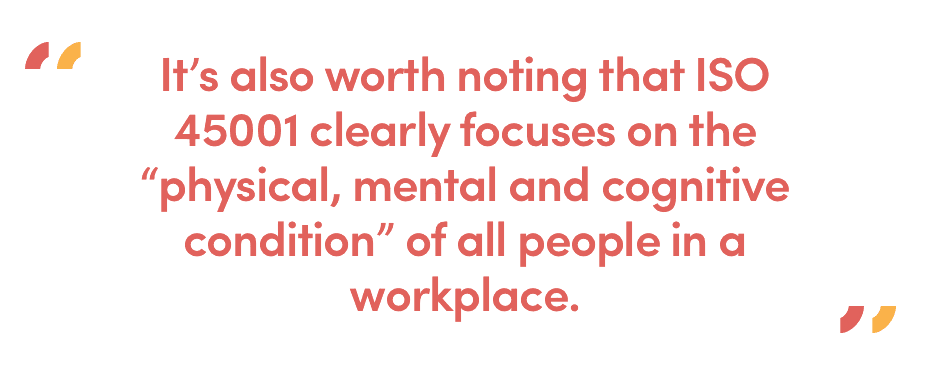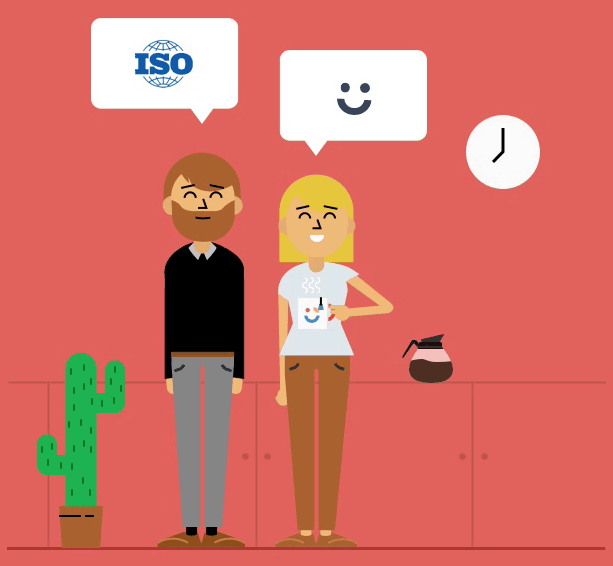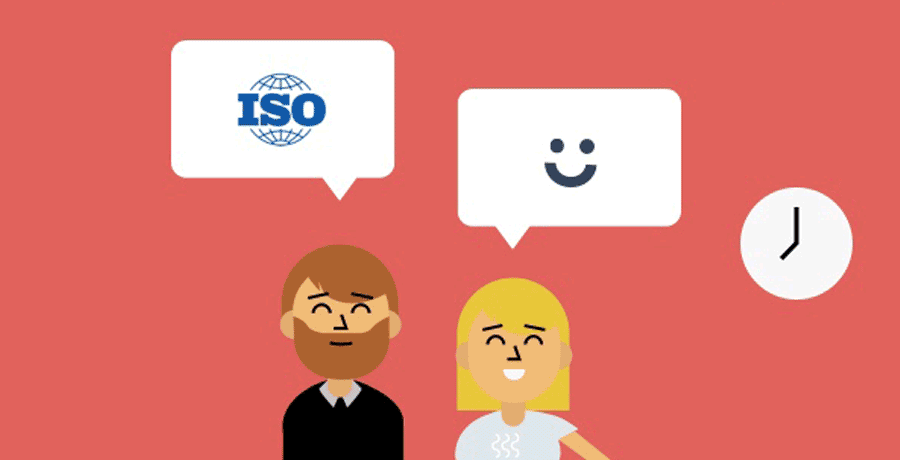ISO 45001
What’s it all about, ISO?
The first thing to say is that ISO 45001 (and how we wish we could come up with a catchier name) doesn’t come out of the blue. It builds on OHSAS 18001, the former benchmark for occupational health and safety, but ISO is clear that this not simply a revision but a lovely, shiny, new standard.
ISO’s ambition is for 45001 to become an integral part of the way we all do business. That’s why it’s directed not just at health and safety officers, but at organisational senior management. It’s also worth noting that ISO 45001 clearly focuses on the “physical, mental and cognitive condition” of all people in a workplace. And whilst much of the focus on publication was, inevitably, on the startling figure of 7,600 worldwide workplace deaths every day, that reference to mental and cognitive health reflects the growing (and long overdue) recognition that employee wellbeing is not just about physical health and safety.
ISO 45001 is underpinned by a Plan-Do-Check-Act methodology which takes organisations through logical steps to address short- and long-term risks to employee wellbeing and to identify opportunities to improve employee health. And that is really the key point – it is as much about identifying opportunities to promote wellbeing as avoiding risk. And we all know what that means: better staff engagement and enhanced productivity.
The devil is in the detail
So, if 45001 really is a new departure, what are the crucial differences? The main point is that the new standard puts the emphasis on the way an organisation works in its whole business environment. This paradigm shift requires organisations to think equally about health and safety and recognise that this area of organisational life is not the responsibility of one officer, but central to running a successful and sustainable enterprise. It’s the responsibility of everyone in the organisation.
ISO itself describes the difference between the two standards in the following way:
- ISO 45001 is process-based – OHSAS 18001 is procedure-based. In other words, it shows you how to find the answer, rather than giving you a readymade one
- ISO 45001 is dynamic in all clauses – OHSAS 18001 is not. ie. it allows you to be responsive to your particular organisation’s circumstances
- ISO 45001 considers both risk and opportunities – OHSAS 18001 deals exclusively with risk. As we’ve mentioned already
- ISO 45001 includes the views of interested parties – OHSAS 18001 does not. There’s a new step which involves including the views of internal and external stakeholders
One of the major differences between OHSAS 18001 and ISO 45001 is the inclusion of leadership in the new standard for the first time. This means that the senior management teams will be actively involved in your Occupational Health and Safety programs. The rationale for this inclusion is that if you get the leadership right then you get the culture right too. This welcomed change shines the spotlight on H&S in the boardroom and promotes top table discussions and involvement which is a massive step forward for employee health and wellbeing.
Put simply, ISO 45001 reflects the new thinking about health and safety, and places it in a more holistic and responsive context. In terms of the well-known parable it’s the teach-a-man-to-fish approach.


What does it mean for me?
Here’s a conundrum: if we all know that really effective workplace health initiatives are based on knowing our individual employees and their needs, what does an international standard have to do with that sort of specific, local innovation? Surely, standardisation means that one size fits all and that’s not good?
It’s hoped that organisations that go through the accreditation process for ISO 45001, will see it as an opportunity to reframe their Health and Safety processes away from fear and compliance, to one of positivity, wellbeing, happiness and productivity. These are all important and significant, contemporary step change indicators.
The impact of this new standard means:
- Active Senior Stakeholder Involvement
- Upweighted HR and H&S Functions
- Clear and Distinct KPIs
- Innovative Change Management Systems
- Reviewed Risk Control
- Improved Management Systems
- Employee Wellness and Wellbeing Initiatives
Let’s be honest here, if you are not already familiar with the world of ISOs and their accreditation, it’s easy to get lost in a morass of techno-speak. By ISO’s own admission the "standard is not easy to apprehend when you read it as a normal book".
Things get a lot simpler for organisations that have already adopted OHSAS 18001 as ISO has set out a three-year migration pathway so critically, organisations in this position can reuse the data and data tools that they are already using – phew!
But perhaps the real significance of ISO 45001 is that it represents an idea whose time has come. It is far from being a checklist of workplace actions to be ticked off on that mythical clipboard. In fact, it is a way of doing things which encourages (or even demands) the sort of workplace innovation that’s central to the best of existing wellbeing practice.
The mainstreaming of an approach to health and safety principles throughout organisations, as envisioned by the new standard, can only add power to the trendsetters in large and small organisations who have been leading the way in innovative and holistic approaches to workplace wellbeing. Since the UK, Germany, Ireland, Denmark and Belgium (with more to follow) have already adopted ISO 45001 as a national standard, there can be no doubt that it is here to stay and will shape thinking about workplace health and safety in years to come.
Forward-thinking, progressive and ambitious leadership teams should be looking for ways to engage their entire organisation around this new vision of Health and Safety in 2018; to make everyone an owner of their personal health and wellbeing in the workplace. When Health, Safety and Wellbeing is owned from the top to the bottom, behavioural changes happen organically not because you’re being told to do it, but because it’s the right thing to do.
Grab a hot drink, get a notepad, and find out more on the ISO website
And if you want to read more blogs like these, then signup to the welbot newsletter



